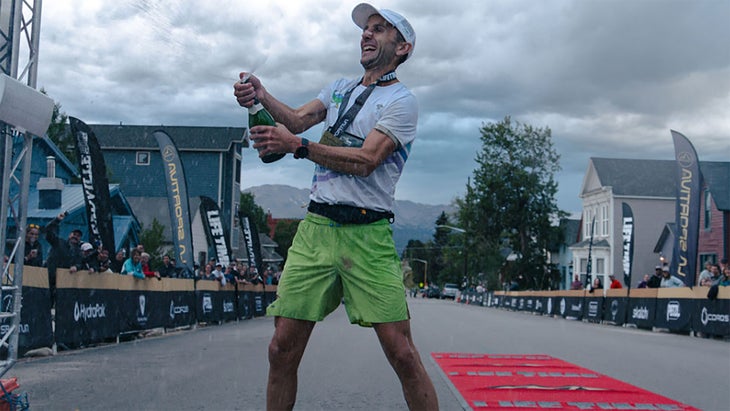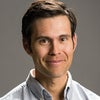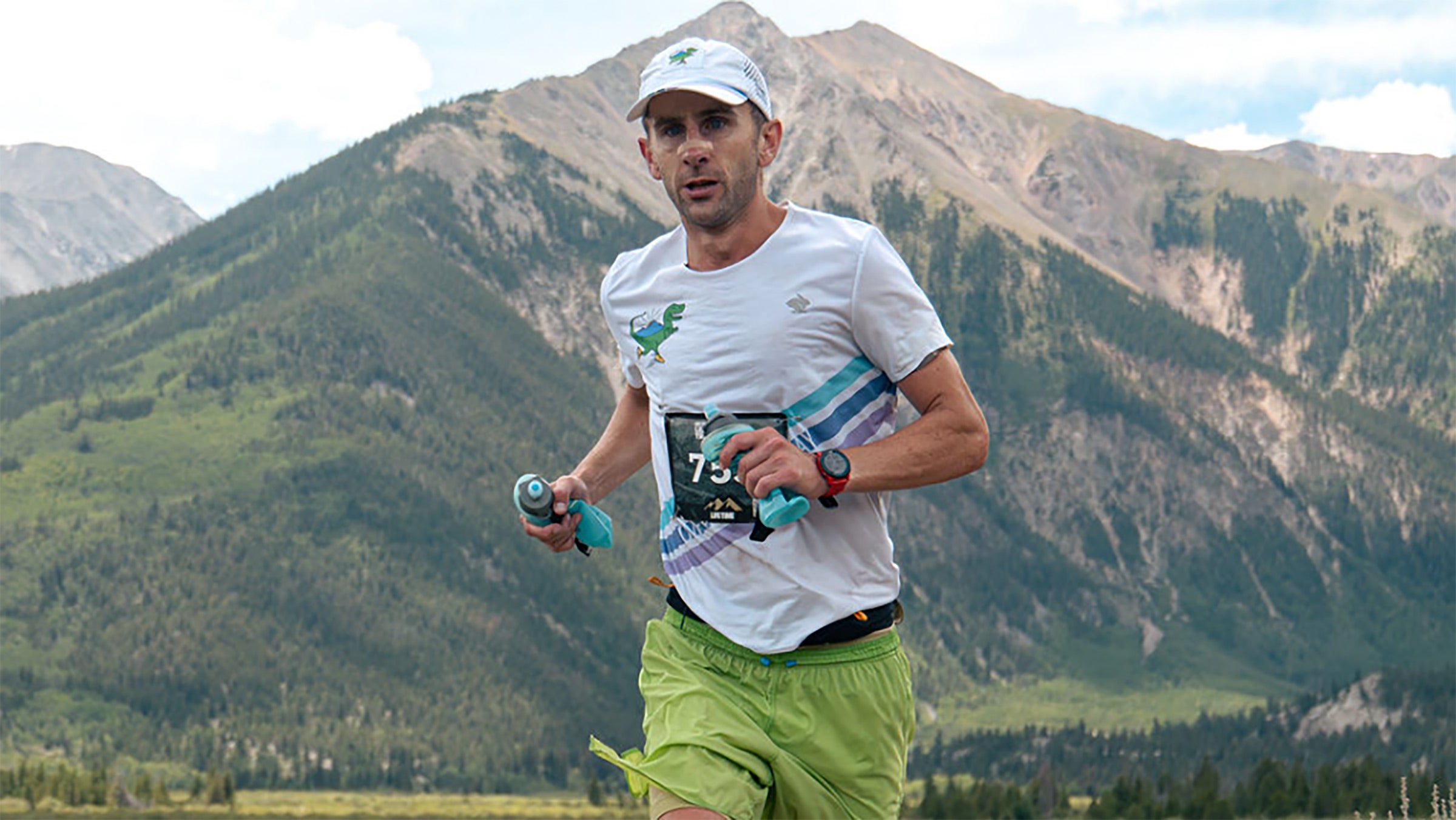Diligent readers of ���ϳԹ���, and its sister publications Trail Runner and ���ϳԹ��� Run, may recognize David Roche and the he wrote for years. These days Roche coaches a cadre of elite and age-group runners, and he also manages a popular trail running podcast called .
But Roche is no slouch himself—he’s scored impressive trail running results at events across the West. For 2024 Roche gave himself a set of racing goals that, at the time, must have seemed overly ambitious. He wanted to do his first 100-mile running race, and chose the Leadville Trail 100 run. Not only did Roche want to complete the event, he wanted to win it and break the course record (15:42:59), set in 2005 by legendary mountain runner Matt Carpenter.
This past Sunday, Roche crossed the finish line in downtown Leadville with a completed set of goals: he finished, won the event, and set a new fastest time of 15:26:34. We caught up with Roche to discuss his amazing performance.
OUTSIDE: Prior to Leadville you’d never raced 100 miles. What advantage did this give you?
Roche: I wasn’t burdened by bad past experiences at that distance. Bad races can and do happen—if I’d run this distance 100 times already then I’d probably have a DNF or a race where I blew up. But a blank slate allows you to channel belief. Writing “I believe” on a blank page is different from writing it on a page filled with scuff marks and stains. That said, I did have an unfair advantage because I’ve coached elite athletes at Leadville, so I’ve had a chance to absorb a lot of information and experiences. I had zero fear of disrespecting the distance. There is this classic wisdom in ultramarathons to “respect the distance,” and I’m sure that some people who were tracking the race probably thought that my early pace was just “David being a dumb dumb” and they assumed I’d blow up.
But I knew that once you get yourself super fit, you’re really only limited by the amount of glycogen that’s available to your body. If you’re efficient enough, you can run pretty fast at a relatively controlled heart-rate so that your burn rate of glycogen isn’t that fast. If you combine a low burn rate with a high consumption rate of carbohydrates, then the conventional wisdom falls by the wayside.

How was it a disadvantage?
I knew that I was probably going to fade in the end, so maybe I could have been better at not fading quite as much if I’d had more experience in 100 milers. But honestly, I don’t think it was a disadvantage. The idea that you need to have done something before in order to make a result more probable can limit your ability to have a breakthrough. Yes, I had a plan, but throughout the race I was open to learning on the fly. Yes, I faced adversity, but that was also the cool part. That was the part I was honestly looking forward to. The day before the race I posted online that I was really looking forward to experiencing the pain cave—that Courtney Dauwalter-inspired zone where you’re moving forward through pain and suffering and all of these feelings. I didn’t care if it happened at mile 20 or 90. I just wanted to experience it.
When did you experience the pain cave?
Mile 80. There’s the Powerline climb, which is quite steep and climbs to high altitude, and the problem is that a lot of athletes experience nausea there. On the climb I was applying one of my training rules, which is that I decided I’d run every single step, no matter what. You’re going up this 22-percent grade. I was running but I was also having these deep burps and wasn’t feeling so hot. At the top I saw people cheering, and I stopped briefly to hug someone, and when I did that I almost passed out. That was the moment when I realized I needed to be more focused on managing my body. My pacer, Teddy, said the only way to get through it was to get to lower altitude. We descended and I felt better, and after that it was just about controlling the burps to the finish.
This spring you were hit by a driver while riding your bike, and the collision left you with major injuries. How did that impact your mental approach to the race?
It made me open to entering the pain cave at Leadville. The collision was a random and shocking event. My agency was taken away. The after-effects, including a major head injury, were totally unmooring. My family and I went through other adversity this year in the form of online trolling, and when you combine it all, I felt like I went through pain and suffering that I had zero control over. And I felt so much gratitude in the process, and from people who gave me love during the ordeals. By stepping up to Leadville, I really wanted to reclaim adversity as something I inflict upon myself, and not something that a car or online trolls inflict on me. So, after the accident I focused a lot on enjoying the hard parts of running.
As a coach, would you ever encourage an athlete to set such ambitious goals when trying a distance out for the first time?
I always want athletes to anchor themselves in the process—the day-to-day grind of training, rest, recovery—rather than a result. Setting goals that are really high can add purpose and meaning to that grind. When I was thinking about what my 2024 would look like, Leadville intoxicated me with its history. It’s in the book Born to Run. When I first started running after quitting football I read about the race in Anton Krupicka’s blog. So, when it came time to move up in distance I figured, what a better goal than to chase this historic record in trail running? When I first set that goal, I’m sure that I didn’t think it was possible on a deep level. But as I got closer to race day the process was really clicking. And while my training doesn’t look as monumental as that of other athletes, I just thought it was possible.
That’s why I tell my athletes “shoot your shot.” It doesn’t always go in, but sometimes you need to take 100 shots to have that one that changes everything.
This interview was edited for clarity and length.


